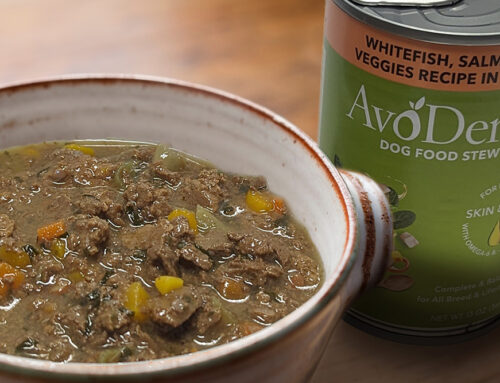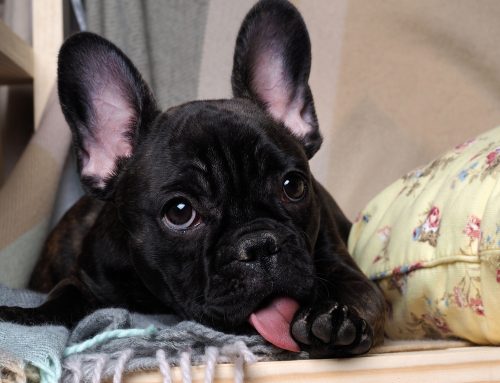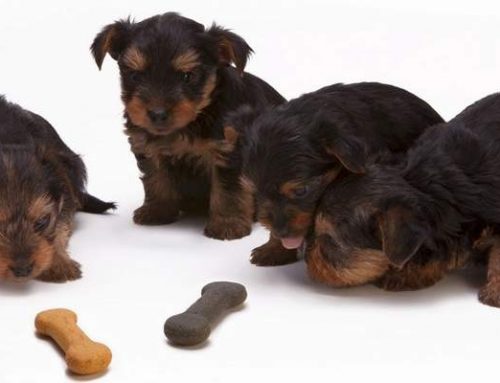Supplies You’ll Need to Get For Your New Puppy:
- AvoDerm premium dog & puppy foods
- Food and water bowls.
- Identification tag, collar and leash.
- Travel crate to accommodate your puppy’s adult size.
- Stain remover for accidents and spills.
- Brushes or combs for your new puppies coat.
- Dog shampoo, toothbrush and tooth paste.
- Safe chew toys to ease teething.
- Flea, tick and parasite controls.
- Nail clippers.
- Tasty reward treats
Bringing Home Your New Puppy
Your new puppy is just like a newborn baby adjusting to a new home! The environment will be different and your new puppy will be surrounded by new faces and voices. This is all a bit overwhelming, so make sure that the puppy has quiet time to rest and adjust.
Feeding Your New Puppy
Much has been learned about puppy nutrition and we know that, just as with people, healthy foods promote longer, healthier lives. We suggest feeding one of our AvoDerm premium dry puppy foods, 2-3 times per day. Feeding a dry food helps control tartar and plaque build-up. It will also help to speed up the teething process due to loosening up the teeth to come in. If your puppy has sensitivity to a harder food you can moisten the food with warm water. We also offer puppy food in can formulas too!
Basic Training
No one wants to have an uncontrollable dog. It is very important that you start training your dog when they are puppies. Start off by teaching your puppy their name. Repetition is the key when training your puppy. They will learn their name after they hear it over and over. Remember to be patient with you puppy.
Just a few tips:
- Spend 5 to 10 minutes at a time training twice daily.
- Keep the tone in your voice consistent to avoid any confusion with your puppy.
- Be serious during training.
- Stay calm and keep your patience. Your puppy will not understand what is happening if you lose your patience.
- Never hit your puppy. Use the term “no” firmly to correct your puppy.
- End your training sessions with a treat and praise.
Picking Up Your New Puppy
Try not to pick up your new puppy too often. When they are this young they are very delicate. It is important that you follow these steps:
- Use both hands when you pick up your new puppy.
- Place one hand under his rear and the other on his chest.
- Hold your puppy against your body to keep him secure and safe.
Teething and Chewing
Your new puppy will need some chewing toys when their teeth are coming through. To avoid them chewing on your furniture or any other forbidden item, you will want to make sure that you have toys such as a rubber ball or bone. Play games with your puppy and their chewing toys. Remember to praise your puppy for chewing on the chew toys and not the valuables in your home. If your puppy starts to chew on things that are forbidden, then simply state “no” firmly and give him a chew toy instead.
Bathing
When bathing your puppy, be sure to use a quality shampoo. Giving your puppy too many baths can strip his skin and natural oils in the coat. Therefore, bathe your puppy only when he needs it. It is safe to bathe your puppy once they are 6 weeks old. You can bathe your puppy in a tub or sink. When the weather is warm you can bathe them outside and let them dry naturally. It is important that they do not get cold or chill.
Grooming
Regular grooming is essential for most dogs. It is important to keep their coats clean from dirt and free of any parasites that may rest in their coats. You can take him to your local pet shop or grooming shop to have this done. The longer the coat on the dog, the more upkeep there is to maintain. Proper brushing is essential for many breeds and it is important to get your puppy used to this at a young age.
Exercise
Your puppy will be energetic and need to have the proper amount of exercise per day to maintain overall health. Each breed is different and requires different levels of activity. Please consult your veterinarian for more details. Your dog will love a large enclosed area to run around in. Walking your puppy is a good start for getting your puppy exercise and begin their training program.
House Training
It is important to begin this process as soon as you bring your puppy home. The longer you wait, the harder it is to break any bad puppy habits. To begin, make sure that your puppy goes outside to do his business after eating and waking up after a nap or first thing in the morning. Sure signs that a puppy needs to go outside are whining by the door, walking around the house and moving in circles. Praise your puppy when he does his business outside. If your puppy has an accident do not raise your voice, yell, hit your puppy or put his face in it. He is too young to understand why you are scolding him. Just remember to use a firm “no” when they have an accident. If you catch your puppy in the act, quickly take him outside and praise him when he is done.
PLEASE NOTE: One of the very best methods for housebreaking your new puppy is crate training. It is not only the quickest method, but also helps keep both your puppy and home safe when you are out of the house or busy with day-to-day activities.
Your New Puppy’s Health
Just as children pick up illnesses from other children, puppies can pick up colds, coughs, and illnesses from other dogs. Serious illness can usually be prevented by vaccine, but always report symptoms such as vomiting, diarrhea, listlessness or lack of appetite to your vet. Some easily treated puppy illnesses include kennel cough and respiratory infection (colds). Parasites (worms) are found in almost every puppy. All of these conditions, can be treated by your veterinarian. It is important for your puppy’s health and well being that you visit a veterinarian for a check-up within the first few days. Preventative care and vaccinations greatly improve the quality of your puppy’s life. After your puppy’s initial shots, annual check-ups are suggested for good health.
Traveling with Your Puppy
When traveling with your puppy, start them off on short 10-minute trips. For example, take your puppy to the pet store, veterinarian or nearby park to play. You want to get your puppy in the car at a young age and do not wait until they are grown. You can gradually increase your rides with your puppy after they are comfortable with the short trips.
Just a few tips:
- Take a passenger the first few times to watch over your puppy.
- It’s a good idea to wait and feed your puppy after the car ride. If you have to feed before it is good to wait a few hours before getting into the car.
- Make sure your puppy has a chance to relieve himself before the ride.
- Take along your puppy’s favorite toy.
- Keep air moving through the car at all times. Do not roll your car windows down too far.
- Make sure that when you go on long rides you stop every hour or two. Your puppy will need water, exercise and may need to relieve himself.
- Reward your puppy at the end of your journey. Treats and praise are the best!





